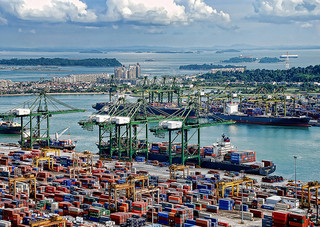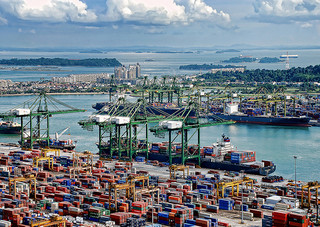 Asia and emerging economies continue to fuel trade growth as global freight data show diverging trends for developed and developing economies.
Asia and emerging economies continue to fuel trade growth as global freight data show diverging trends for developed and developing economies.
The latest update on global freight data released in July by the International Transport Forum at the Organisation for Economic Co-operation and Development indicates that through March 2014, overall global freight showed no change since the previous quarter.
Total external trade by sea and air, in tonnes, remains stagnant below pre-crisis (June 2008) levels in the EU27 and the United States. But the picture for Asia and BRICs (Brazil, Russia, India, China, and South Africa) demonstrates strong movement, said the ITF in its “Statistics Brief on Global Trade and Transport” for July.
While imports by sea stagnate below pre-crisis levels, exports by sea in EU27 and the U.S. reached 29 percent and 23 percent above pre-crisis peak, although showing signs of a slowdown for the latter. Total external trade by air for both EU27 and the USA remained 4 percent and 3 percent below pre-crisis levels, respectively.
In contrast, “BRICS and Asia are locomotives of growth,” said the ITF, with EU-27 and U.S. exports to Asia and BRICS showing continuous growth.
China’s external trade by sea and air, measured in values, continues to grow since recovery in 2010. Its total external trade by sea and air, in values, was 55 percent and 59 percent above the pre-crisis peak.
Imports to China from Europe and North America by sea outpace export growth and were 85 percent and 75 percent above pre-crisis peak. Imports by air also experience similar growth.
Moreover, intra-Asian trade, which accounts for nearly half of China’s total external trade in value, remains strong.
China’s external trade by sea with the Association of Southeast Asian Nations and South Asian countries reached 126 percent and 39 percent above pre-crisis levels, while external trade by air increased to 30 percent and 88 percent above pre-crisis peak.
Freight by sea, air and road to China’s neighboring Commonwealth of Independent States countries and Russia grows strongly, while rail cargo continues to stagnate below pre-crisis levels.
Inland freight transport reflects diverging trends between developed and emerging economies. Rail freight in the EU area remains below pre-crisis peak while stagnating at pre-crisis levels in the U.S. Road freight in the EU area remains 11 percent below pre-crisis levels.
Growth is stronger in emerging markets. Rail freight volumes in Russia and Turkey were 5 percent and in China 20 percent above pre-crisis levels. Road freight volume in Russia, in turn, reached 14 percent above the pre-crisis peak in the fourth quarter of 2013.
The ITF’s “Statistics Brief on Global Trade and Transport” presents the latest global freight transport trends based on the Global Trade and Transport Database and the ITF Quarterly Transport Statistics. These data are collected through a questionnaire and from external sources, including Eurostat, U.S. Census and Japan Customs.
Photo: chooyutshing





